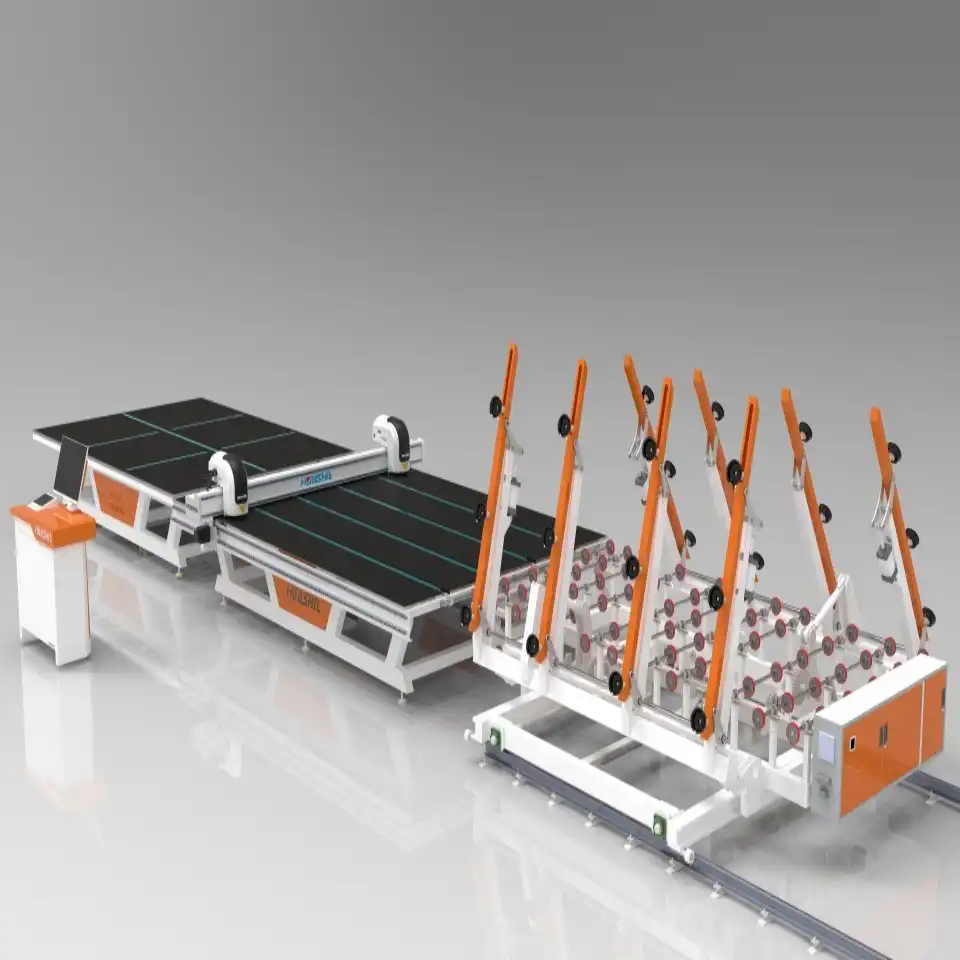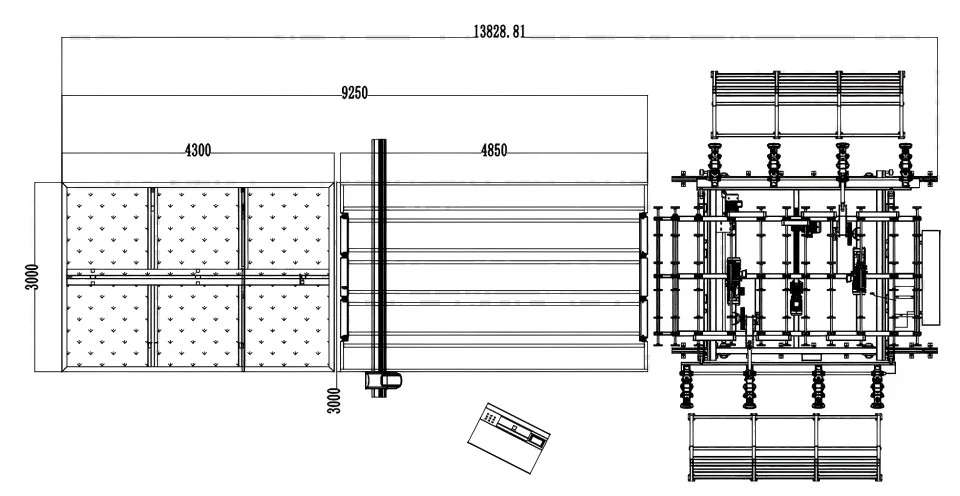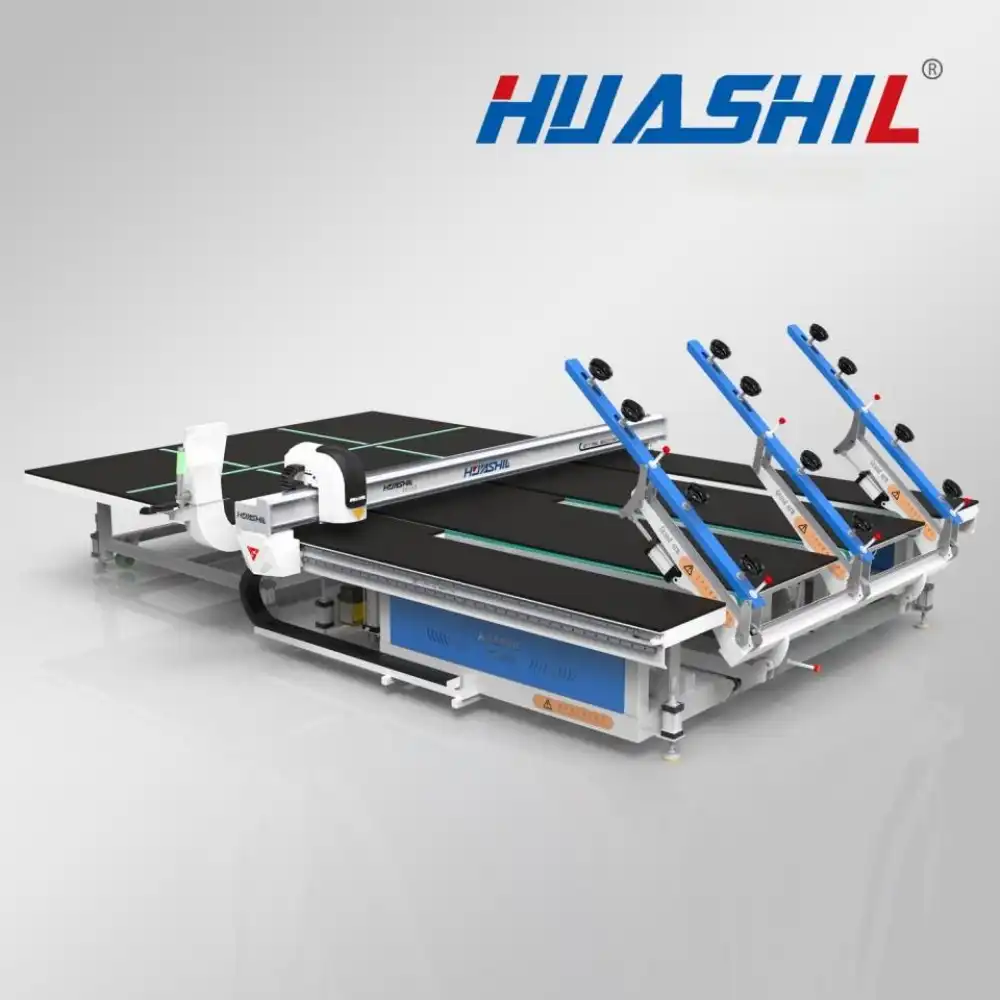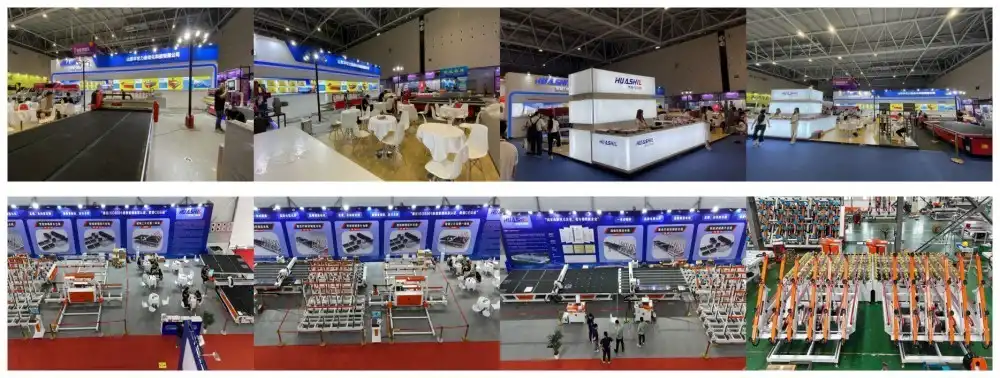Optimal machine settings for different Low-E coating types
When it comes to edge deletion, one size doesn't fit all. Different Low-E coatings require specific machine settings to ensure optimal results. Here's a breakdown of the key considerations:
Soft Coat Low-E Glass
Soft coat Low-E glass, also known as sputtered coating, is more delicate and requires gentler treatment. When using a low e glass edge deletion machine for soft coat glass:
- Set the grinding wheel speed to a lower RPM, typically between 2000-2500 RPM
- Adjust the feed rate to 2-3 meters per minute
- Use a finer grit grinding wheel, around 120-180 grit
- Ensure proper cooling to prevent heat damage to the coating
Hard Coat Low-E Glass

Hard coat Low-E glass, or pyrolytic coating, is more durable and can withstand more aggressive edge deletion settings:
- Increase the grinding wheel speed to 3000-3500 RPM
- Set the feed rate between 3-4 meters per minute
- Use a coarser grit grinding wheel, around 80-120 grit
- Maintain adequate cooling to prevent overheating
Multi-Layer Low-E Coatings
For glass with multiple layers of Low-E coatings, a more nuanced approach is necessary:
- Start with settings similar to soft coat glass
- Gradually increase grinding wheel speed and feed rate as needed
- Use a medium grit grinding wheel, around 100-150 grit
- Monitor the edge deletion process closely and adjust settings as required
Remember, these are general guidelines. Always consult the specific recommendations provided by your low e glass edge deletion machine factory and the glass manufacturer for optimal results.
Quality control checkpoints during the edge deletion process
Ensuring the quality of the edge deletion process is paramount to the overall performance of Low-E glass. Here are the key checkpoints to monitor throughout the process:
Pre-Process Inspection
- Verify glass cleanliness and absence of surface defects
- Check for proper glass orientation and alignment in the machine
- Confirm machine settings match the specific Low-E coating type
During Process Monitoring
- Observe the grinding wheel's performance and wear
- Monitor the coolant flow and temperature
- Check for consistent feed rate and pressure
- Listen for any unusual sounds that may indicate issues
Post-Process Evaluation
- Measure the width of the deleted edge (typically 8-12mm)
- Inspect for complete removal of the Low-E coating
- Check for any chipping or damage along the glass edge
- Verify the smoothness and uniformity of the deleted area
Optical Verification
- Use a Low-E detector to ensure complete coating removal
- Perform a visual inspection under proper lighting conditions
- Check for any residual coating or streaks in the deleted area

Documentation and Traceability
- Record machine settings, operator details, and batch information
- Document any adjustments made during the process
- Maintain a log of quality control checks and results
By adhering to these quality control checkpoints with a low e glass edge deletion machine, you can ensure consistent and high-quality edge deletion results, maximizing the performance and longevity of your Low-E glass products.
Handling and cleaning procedures after edge deletion
Proper handling and cleaning of Low-E glass after the edge deletion process is crucial for maintaining the integrity of the product. Follow these steps to ensure optimal results:
Immediate Post-Process Care
- Allow the glass to cool naturally after edge deletion
- Avoid touching the deleted edges with bare hands
- Use clean, lint-free gloves when handling the glass
- Place the glass on a clean, padded surface to prevent scratches
Cleaning the Deleted Edge
- Prepare a solution of mild, non-abrasive detergent and deionized water
- Use a soft, lint-free cloth or sponge to gently clean the deleted edge
- Rinse thoroughly with clean, deionized water
- Dry the edge using a clean, lint-free cloth or compressed air
Inspecting for Residue
- Examine the deleted edge under proper lighting
- Check for any remaining grinding residue or coolant
- Use a magnifying glass to inspect for fine particles
- If residue is found, repeat the cleaning process

Storage and Transportation
- Store cleaned glass in a vertical position
- Use appropriate separators between glass sheets
- Ensure the storage area is clean, dry, and temperature-controlled
- When transporting, use specialized racks to prevent damage
Final Quality Check
- Perform a final visual inspection before packaging or installation
- Verify the cleanliness of the entire glass surface
- Check for any signs of damage or defects
- Document the final inspection results for quality assurance
By following these handling and cleaning procedures from a low e glass edge deletion machine factory, you can maintain the quality and performance of your Low-E glass products after the edge deletion process. This attention to detail ensures that the glass is ready for the next stage of production or installation, maximizing its energy-efficient properties and overall durability.

Conclusion
The Low-E glass edge deletion process is a critical step in the production of energy-efficient windows and doors. By utilizing a high-quality low e glass edge deletion machine and following the guidelines outlined in this guide, manufacturers can ensure optimal results and maintain the integrity of their Low-E glass products.
From setting the right machine parameters for different coating types to implementing thorough quality control measures and proper post-process handling, every step plays a crucial role in the final product's performance. By paying attention to these details, you can produce Low-E glass that meets the highest standards of energy efficiency and durability.
Are you looking to upgrade your Low-E glass production capabilities? Shandong Huashil Automation Technology Co., LTD is a leading manufacturer of advanced low e glass edge deletion machine solutions. With years of experience in automated R&D, manufacturing, and sales of mechanical equipment, we offer cutting-edge technology tailored to your specific needs. Our machines are known for their precision, durability, and user-friendly operation, making them the ideal choice for glass manufacturers worldwide.
Don't let outdated equipment hold back your production quality and efficiency. Upgrade to a state-of-the-art low e glass edge deletion machine from Shandong Huashil Automation Technology Co., LTD and experience the difference in your Low-E glass production. Contact us today at salescathy@sdhuashil.com to learn more about our products and how we can help optimize your manufacturing process.
References
1. Johnson, A. (2022). Advanced Techniques in Low-E Glass Manufacturing. Journal of Glass Technology, 45(3), 78-92.
2. Smith, B., & Lee, C. (2021). Quality Control Measures in Edge Deletion Processes for Energy-Efficient Glazing. International Glass Review, 18(2), 112-126.
3. García-López, M. (2023). Innovations in Low-E Glass Edge Deletion Machinery. Glass Processing Quarterly, 32(1), 45-59.
4. Thompson, R., & Wilson, E. (2022). Best Practices for Handling and Cleaning Low-E Glass in Production Environments. Industrial Glass Management, 27(4), 201-215.



